A velomobile, for those who don’t know, is a human-powered vehicle. Also known as a bicycle cars, these things are based off of recumbent bikes and tricycles and have a full, aerodynamic outer shell that protects them from weather and crashes.
Most of these devices are three or four-wheeled, though two-wheeled versions exist. Bicycle car really is the most accurate name for these things, since they are pedaled and steered like a bicycle.
There are multiple kinds; hybrids that have both pedals and a motor, streamliners made for racing, and models both with the head of the rider exposed and with the head covered. Some of these come with rear-wheel steering, while there are also models that don’t have that multiple rear wheels. In some ways, you can even say that a velomobile resembles a recumbent bike.
30 iconic velomobile designs
In the past 85 years, we’ve seen velomobiles pop up time and time again. So to celebrate the many different models, we have a big graphic with 30 of the most iconic velomobile designs since the 1930s.
You can add this infographic to your website by copying and pasting the HTML code below
A closer look at the different designs
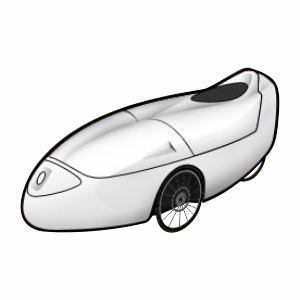
Designed by Kjelt Wijma and Bart de Wert, the Aerorider SPORT was released in 2000, and there are dealerships for it in the Netherlands, USA and Germany. It comes equipped with lights and storage compartments for luggage and is known for its low center of gravity and comfortable seating.
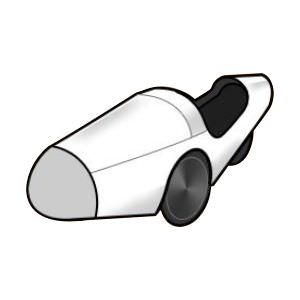
The KV4 is known for its durability; its hard aluminum frame and full suspension make it pretty resilient to just about anything the world throws at it. The KV4 is manufactured by Alligt, which produces all sorts of velomobile models and parts.
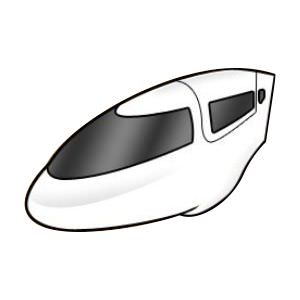
The Aquila was designed and built by Trisled, an Australian HPV production company, and sells for $8500 Australian dollars.
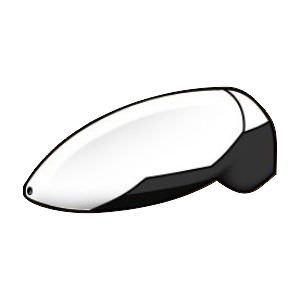
It’s hilarious design aside, the Arion 1 is very aerodynamic (stop laughing), and potentially fast enough to exceed the current world speed record of 83.13 MPH.
The Arion 1 was built by the University of Liverpool Velocipede Team (ULV Team), which is made up of 16 students. Along with the ULV Team, there are three professionals who have been riding the Arion 1 (Ok guys, it’s not funny anymore) to attempt to beat the world record.
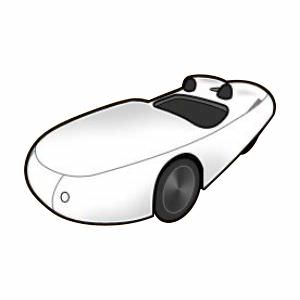
This two-seater is the perfect couple’s bike. It’s like a tandem bike that’s comfortable. The downside is that the company behind DuoQuest, Velomobiel, has only built one, and has no current intentions of making more. For now, owning your own DuoQuest is just a dream.
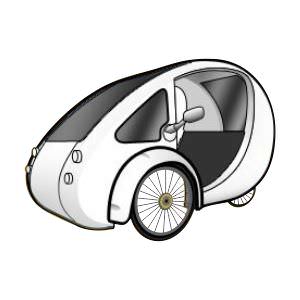
This velomobile is produced in a multitude of colours, and they also have a “tactical” model available for police departments to purchase. They aren’t cheap though; they cost between $5500 US Dollars and $6500 USD.
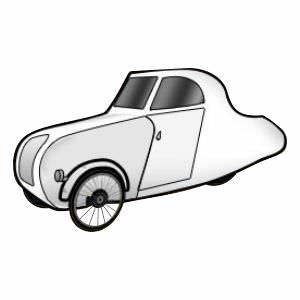
Over the years, many hobbyists have built their own Fantoms, so they crop up from time to time.
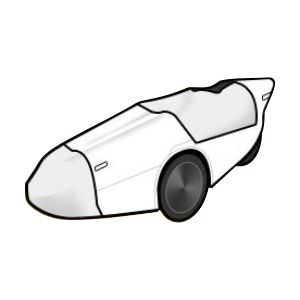
Aside from being very handy for casual use, the FAW+ is also lightweight and is often used for racing. The FAW+ can be found for sale in the USA and Europe.
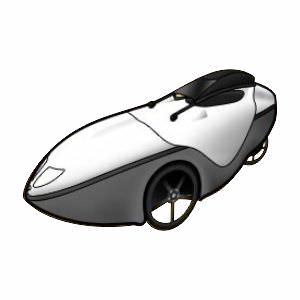
The Orca is known for having better handling and safety and being more comfortable than its predecessor. It comes in a range of different colours, and is praised for being low maintenance. If you’re living outside of Europe and you want one though, you’re out of luck. Currently, the Orca is only sold in the European Union.
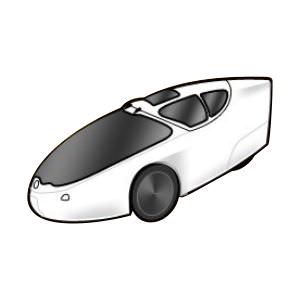
It’s made with top quality interior parts, with comfort in mind. The “Carbon version” is made with carbon fiber and weighs about one kilogram more. Richard Dahne won the 2014 HPV World Championships in an Evo-R-.
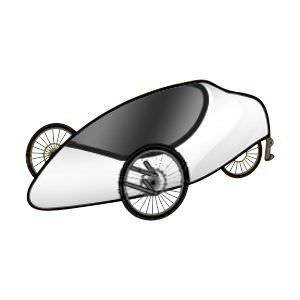
While on land, it functions like most other velomobiles, but it can seamlessly travel in water. While in water it moves similarly to a kayak. The creator envisions it as the perfect companion to people who frequently travel between islands. A video of the HEPAV entering water can be found here.
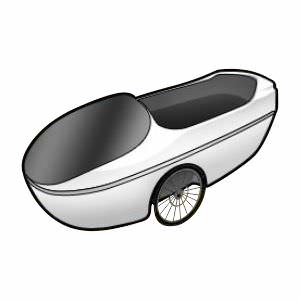
The Hornet comes with an electric engine as well to combine the power of electricity and pedaling, and is known for its comfort, handling and its ability to tackle hills. This velocar comes with full suspension, and can be upgraded to have lights, turn signals and even a horn.
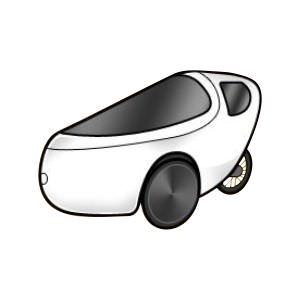
The Leiba Classic is comfortable, stylish and practical. The Leiba Classic is also on the cheaper end of the velomobile price range, starting at €5000.
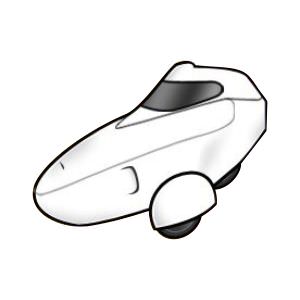
It’s made to practically cover long distances without problems. The frame is built strong and resilient to abrasion; the Leitra was built for use anywhere by anyone.
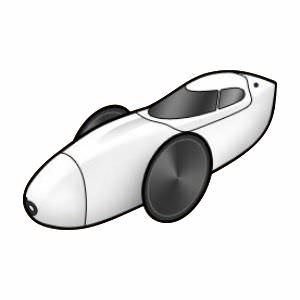
Like most velomobiles, the LeMans is a tricycle. The design came from Joel Vincent, from France, and the first completed model was released in 2012.

See, SUV in the velomobile world doesn’t stand for Sports Utility Vehicle. It stands for Sustainable Utility Velomobile. This velocar is the flagship product from the US company Liberty Velomobiles. The Liberty SUV comes with many of the comforts of a car; lots of storage, stability, lights and turn signals.
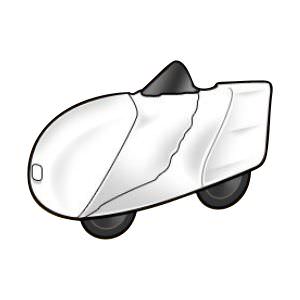
This bike’s body fairing is mostly spandex, however, so while it is extremely lightweight, it’s also lacking in some of the safety features standard in other velomobiles.
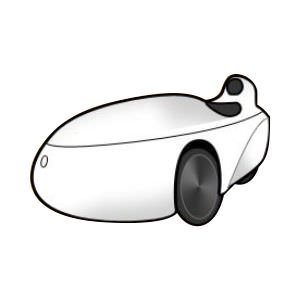
However, this velomobile doesn’t just look good, it’s also a fast one, capable of holding its own in a race setting. It has a wide wheel base and low centre of gravity, making it hard to tip over, and it’s known for having excellent handling. Riders have the option of fitting it with an electric assist.
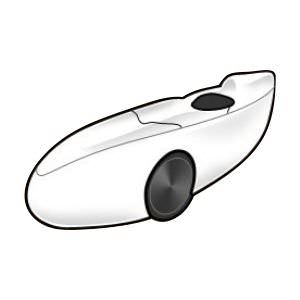
The SKR is built with a large cockpit for riders of all shapes and sizes. The design team, headed by Jon Reinsch, took inspiration from the German and Dutch velomobiles, and it shows in the design and shape.
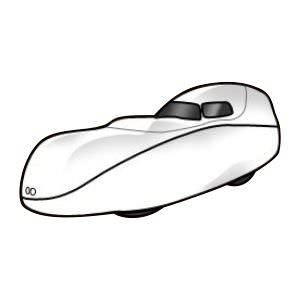
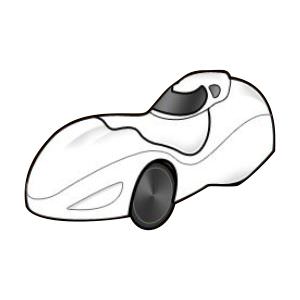
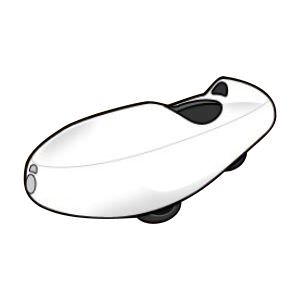
The steering and controls on the Quest are loved and well-received. Like other casual velomobiles, the Quest is designed to limit the possibility of tipping over and reduce the damage sustained in accidents.
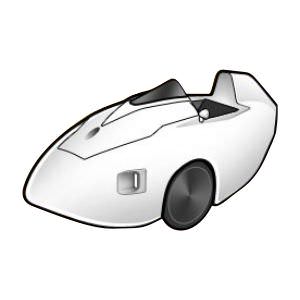
Built in the USA by self-proclaimed tinker Dave Langkamp, the Radius TT was made to help Dave get around town. This “show stopper”, as he put it, was Dave’s personal project that got a lot of attention from the velomobile community for the excellent craftsmanship and design.
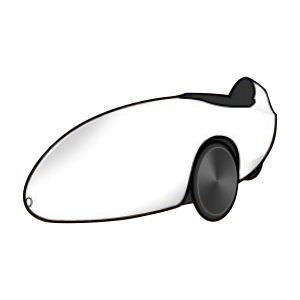
Designed by Ben Goodall, the Rotovelo is a good companion for casual riders, with good amounts of luggage space and lights/mirrors on it. You can get versions with a top and without.
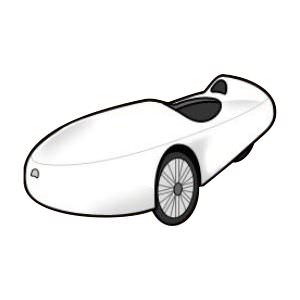
Do not expect a bumpy ride when you get in a Strada. This velomobile was made for comfort. It also has a good resistance to the weather and elements, and is a safe ride.
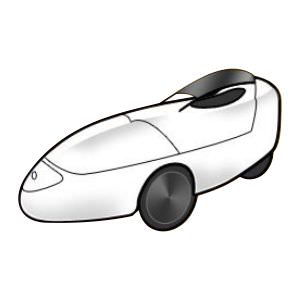
It’s got style, it’s comfortable, its speed is impressive and it can handle whatever you plan to do with it. Fans of the original Sunrider can be nothing but thrilled to see this incredible successor.
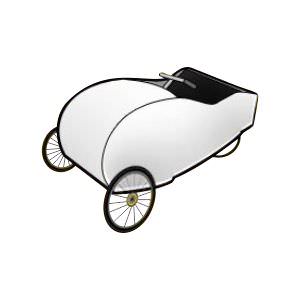
The Type H was highly sought after especially during Nazi occupation, as fuel was a scarce commodity and riding a Type H was free (getting one, on the other hand, cost a pretty penny).
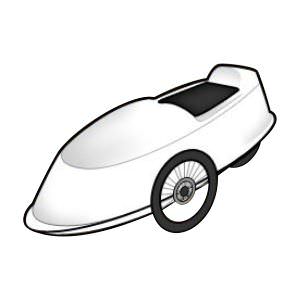
The Basic comes as a part of Velocity Velos’ new initiative to make velomobiles more affordable, and thus expand the market for them. While most Velomobiles cost from $5000 USD to $10,000 and beyond, the Basic has a relatively small price tag: $3399.00 USD.
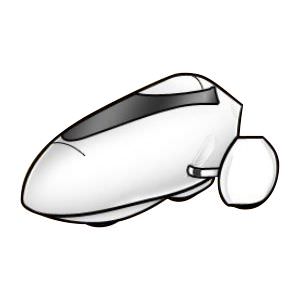
You see, it’s called the Velotilt because the wheels actually tilt while turning. Designed for maximized maneuverability at high speeds, the Velotilt is an attempt at revolutionizing velomobiles. Velotilt comes from the mind of Will Schermer and the blood sweat and tears of his team.
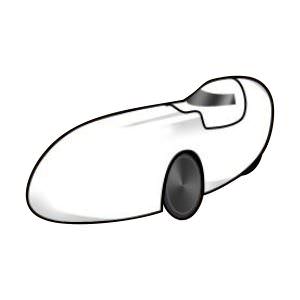
It is now produced by the Czech Republic company Katanga, but it was originally made by Belgium’s own Frederik Van De Walle. Its specs are some of the best on the market.
Why choose a velomobile
There are three good reasons for choosing a velomobile instead of a normal bike:
- First of all, velomobiles are more comfortable than normal bikes. No matter how far you go, you can’t get uncomfortable since your weight is carried by a long seat instead of a small saddle. You also don’t experience any pressure on your wrists and arms, which means that there is less chance of stress-related injuries. Most velomobilists also think it’s very nice that the outer shell protects them from rain and bad weather (I definitely thought so when I tried a Leitra while it was raining a lot. It was very enjoyable to sit protected from the rain – and the feeling didn’t decrease when I looked out and saw all the normal cyclists get wetter and wetter).
- Velomobiles are also safer than normal bikes. In a velomobile, you sit protected by the shell and the frame of the bike, which means that they will get hit before you if a car clown drives into you.
- Finally, velomobiles are faster than normal bikes. Almost all the fastest bike records are set using velomobiles. If your thread with 100-watt, you will go around 13 mph (21 km/h) on a normal bike. Are you threading the same 100 watts in a velomobile, you will go around 21 mph (34 km/h). The best types of velomobiles also come with an electric assist motor.
Why there aren’t more velomobiles
Considering the advantages, it might seem strange that there aren’t more velomobiles. In most places, they are a very rare sight. Some would even say that not a lot of new velomobiles produced now. Riders definitely feel comfortable in them, it is just that the idea seems outdated to most of the manufacturers.
The reasons velomobiles are so rare are:
- Velomobiles are rather big and take up a lot of space on the bike lanes (Some even call them bulky items now). They are therefore rather unpractical in the cities and best used if you are going long distances outside cities with lots of traffic and narrow bike lanes.
- Velomobiles are heavier than other bikes, so it can be difficult to get started when the light turns green. They can also be difficult to bike uphill. These difficulties are the main reason that some velomobiles are equipped with an engine.
- Another problem is the price. Velomobiles are rare and there aren’t any companies that mass-produce lots of these bikes. Even the cheapest models cost around $5,000 USD – or around 6 times as much as a nice normal bike.
Velomobiles vs. electric bikes
As much as I like velomobiles, I don’t think they will ever become mainstream. Instead, I think we will see more and more electric bikes since they offer some of the same advantages:
- First of all, electric bikes also allows you to go faster than on a normal bike. And because you use less energy, you can also go longer distances on an electric bike than on a normal bike (just like you can in a velomobile).
- Electric bikes aren’t as heavy as most velomobiles and they always have an engine, so they are easier to get started when the light turns green and they are also easier to bike uphill with (actually it is easier to do both things on an electric bike than on a normal bike).
- Most electric bikes are also cheaper than the average velomobile. Because there are several companies mass-producing electric bikes, you can find several good models for around $2,000 USD.
For most people it makes more sense to invest in an electric bike than a velomobile, but that doesn’t mean I don’t like velomobiles. I really do like them a lot and if we didn’t live in the middle of Copenhagen, I would definitely consider buying one.
If you like the idea of owning velomobiles, you should also try out these adult electric tricycles.
Also Read:
- Best Mountain Bikes Under $500
- The Best Bike Bell Review And Buying Guide 2023
- 15 Best Bikes For Heavy Riders (Updated 2023)
- Best Hybrid Bikes For Women: Find Top Brands Reviewed And Ranked
Should you have any questions or require further clarification on the topic, please feel free to connect with our expert author Dillon Hiles by leaving a comment below. We value your engagement and are here to assist you.


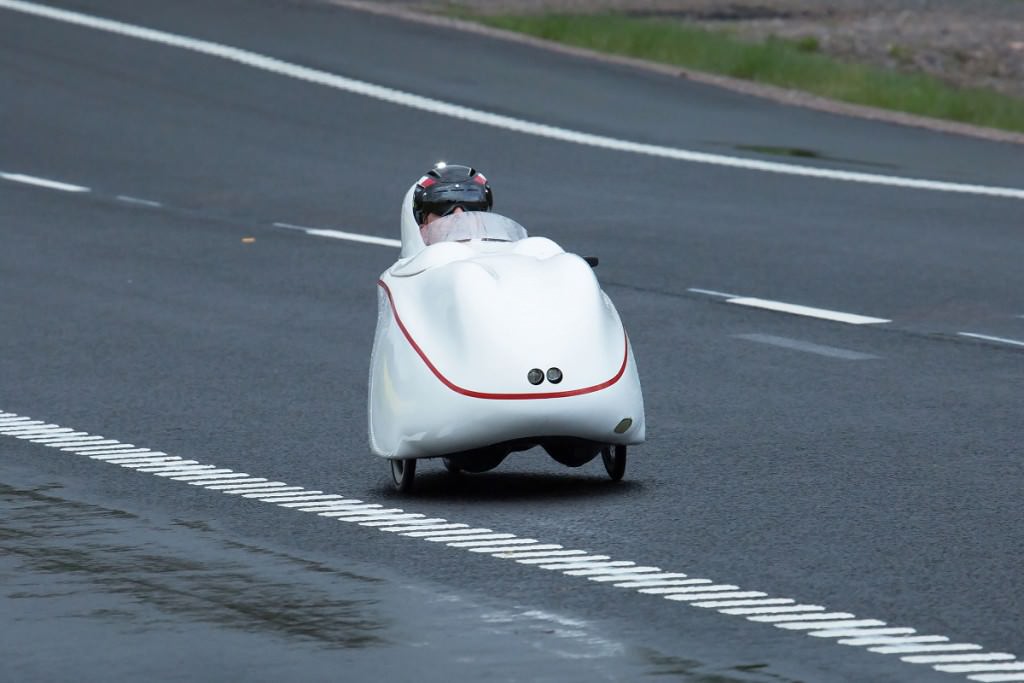
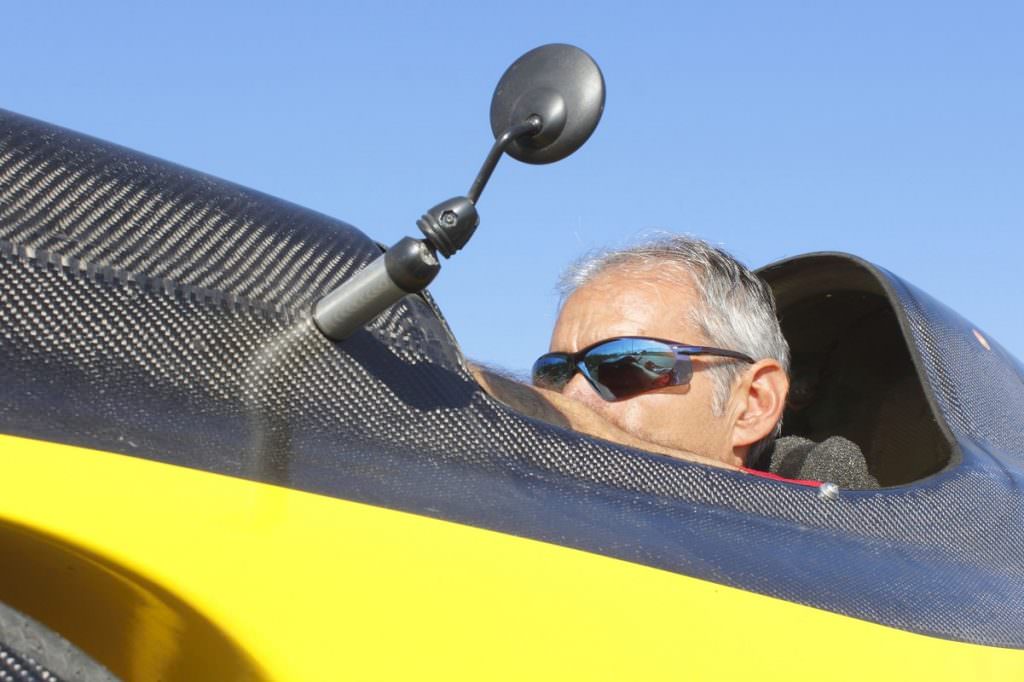
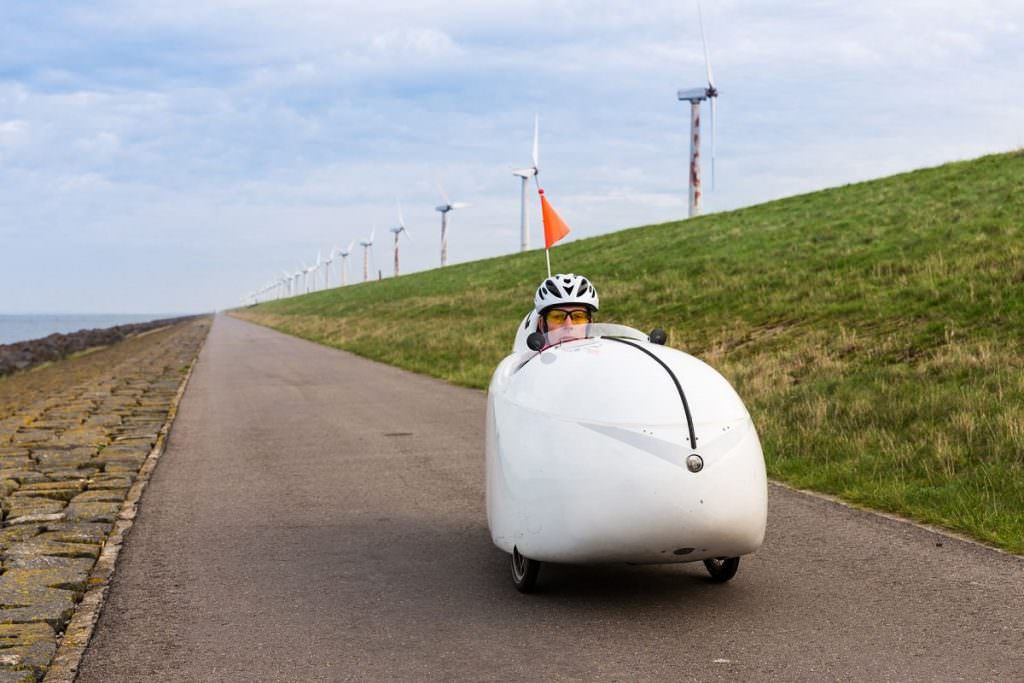
65 thoughts on “30 Iconic Velomobile Designs From The Past 85 Years”
Impressive graphic !
The first book about velomobiles (1982) also had nice graphics.
It was published in Russian and German and the author was the lithuanian professor Vytas Dovydenas. He also introduced the term Velomobile.
https://www.icebike.org/ continues the tradition in an exemplary way.
Nice overview.
We must hope that someone starts a serial production of some of the models, it doesn’t make sense that they cost more than a small car without taxes.
Agree. It doesn’t feel right that they are so expensive while being so much better for the environment, our health, etc. than more and more cars.
You should talk to Frans van der Merwe about his Pterovelo and include it in your graphic.
See:
http://pterovelo.com/
http://pterovelo.blogspot.com/
https://www.facebook.com/pages/Pterov%C3%A9lo/175166235876194
Nice bike. I have never seen it before. Thanks for the tip.
On the contrary, it makes very reasonable sense that these velomobiles are so expensive right now. They are predominantly built by hand in shops where there are a handful of skilled employees at best, or in the case of C.G. Rasmussen of Leitra just himself. So the time and effort to produce these vehicles is translated into a higher cost-per-build. It would be nice if we could mass-produce them, but the market is still relatively new (anywhere from 2-40 years old, depending on which velomobile you cite), and investors are too much into the quick return so are rarely going to jump on this market anytime soon until a major manufacturer like Toyota or BMW gets involved. Plus, the world in general does not have the cycling-infrastructure – nor the political will to provide it – to have the roads filled with velomobiles. It’s still a highly car-centric world, and for those places like Copenhagen who have better cycling infrastructure than 95% of the world, current cycling roads/lanes are *still* not optimum for a velomobile – either too narrow, poor surface, or too filled with regular cyclists. I know this personally because I live in Copenhagen, and have been commuting by velomobile for about 6 years here (currently with a Leitra Wildcat – new design actually).
I think the biggest problem is getting people to understand that yes, the velomobile is expensive, *but* compared to a motor vehicle that would travel the same comparable route for commuting (5-6 km city driving average, for example) or the school-run with the kids, or shopping at the nearby mall, a velomobile is cheaper to run and maintain yet provides the same benefits (and a few advantages).
It’s easier and cheaper to repair – it’s basically a bicycle at it’s heart. The velomobile pays for itself within the first year of use – if not earlier. A motor vehicle depreciates in value the moment it leaves the salesman lot. A velomobile tends to hold onto much of it’s value, and often outlives it’s owners (The Leitra is a case in point- over the last 14 years I’ve seen about 6-7 velomobiles out-live their owners, return to the Leitra shop in Denmark, and after a little tune up are often resold for 2/3 of it’s original price in a condition that is – aside from some cosmetic blemishes – nearly brand new). It typically provides more room for carrying things, better weather protection, and better safety than a bicycle. These things well offset it’s initial high cost.
When local Danish people cry to me ‘but that velomobile costs 40,000 DKK, compared to my used Toyota Corolla that I only paid 20,000 DKK for!’, I reply with ‘but you forget that you will pay another 3000-4000 kroner in gas per year, 4000-5000 kroner in insurance per year (average), change your oil every 5000-8000 km at 300-500 DKK per change if you pay a shop to do it, new tires every 50,000-100,000 km, cost of car repair or brake replacement/repair, etc. etc. etc. so now your 20,000 kroner car costs at least 8,000-10,000 kroner per year to use. Where-as my running costs are less than a 1000 kroner per year *for the same usage*: commuting 12 km roundtrip to work, plus shopping distance. Oh and I don’t have to pay for a health club – I’m staying healthy by cycling everywhere – so my medical expenses are lower, I’m fitter, and I am just as fast – usually faster – crossing through the city than a car or public transport.’
People don’t realize that a velomobile is an investment that will *save* them more money in the long run. They might have to adjust their lifestyle a little bit (perhaps shop a little more often to offset the smaller cargo capacity compared to a Toyota Corolla for example), but that benefits them more.
Good thinking. I agree that most people forget how much it cost to keep a car running and that it’s almost free to keep a bike or velomobile running (+ all the health benefits, environment benefits, etc.)
Where and how far do you commute in Copenhagen? (you might also want to check out our graphic about Copenhagen, http://www.cykelvalg.dk/bike-city-copenhagen/)
I live in Islands Brygge, just past Langebrø. My commute takes me across the city to Nørrebro, about 5 to 6 km one way depending on the route I take, or easily 15-20 km if I am not in a hurry and take a more scenic route home. C.G. wants me to remind people that there is a Leitra with BIONX motor available for rent at the Bicycle Innovation Lab’s Bicycle Library in Amager, where people can also rent all sorts of strange bikes, from recumbents, to cargo bikes, to tall bikes, to social bikes to folding bikes, to e-bikes. It’s a great way to test out the Leitra before investing in one. http://www.bicycleinnovationlab.dk/cykelbiblioteket
“…kabinecykler er nogle store sataner, der fylder godt op på cykelstien…” Hahaha! For me it is the other way around. I’m constantly ringing my cycle bell to get cyclists to move out of my way – they take up too much space because they often ride 2-3 side-by-side on the cycle roads, preventing me from going at a higher average speed during the morning commute – especially over bridges like Langebrø. 🙂
And I take a up a lot of space in our Christiania bike 🙂
I am in Winnipeg, Canada. Born on Bornholm, but raised in Canada. I ride a Rans long wheelbase recumbent her. We have I person on a Quest Velomobile. Yes, it takes up a lot of space on bike lanes (which we have few of). But sure is nice to see. I have often considered buying 1, but cost is a factor with our long winters. A velomobile would lengthen the riding season, but our snowfalls will greatly impact riding!! Thanks for the blog info. Hilsen fra Winnipg!
Hi Mad, thanks for this very nice overview.
I have a few comments though: I guess you calculated the achieved speeds and power with Kreuzotter? The results for the strong head wind do not seem logical to me: why is a racing bicycle faster than a standard velomobile in such conditions? According to Kreuzotter, even a triathlon bicycle is almost 3 km/h slower than an Alleweder velomobile!
Also, it looks like a strong headwind means for you a wind speed of 70 km/h. These are not very common riding conditions!
By the way, the Velocar was originating from France and not from Germany (https://en.wikipedia.org/wiki/Velocar)!
Thanks. Speed and power we found here: http://users.telenet.be/fietser/fotos/VM4SD-FVDWsm.pdf
I have noted that the country is wrong for the Velocar Type H. It will be fixed in the next version of the graphic.
Hi, I am surprised to see that the Vélolcar Type H designed by Mochet in 1930 is seen as a German design on your website. It was designed and built in Puteaux, 5 km west of Paris as this website stats: http://www.svvs.org/Mochet-Velocar.shtml
Best regards
Thanks a lot for the great link, never seen that page before. The Velocar Type H country will be fixed in the next version of the graphic.
Very nice Overview!
The missing Designer of the Leiba is Vasili Gess.
http://www.leiba.de
Thanks a lot for that info.
How is the turning circle measured? Outer diameter of the turn?
Good question. I emailed a lot of people/companies to get the information, but I never thought about asking exactly how the turning circles were measured. Guess I just thought they were all using the outer diameter of the turn (i.e. how much space would be required to turn).
The Milan velomobile was designed by Jens Bückebusch and Eggert Bülk. http://www.milan-velomobil.de/index_en.htm
The DF and DF XL, designed by Daniel Fenn are missing: https://www.intercitybike.nl/en
The Leiba Classic is made by http://www.leiba.de
Like the Leiba X-Stream and the new Leiba Record
Nice collection work ! Bravo
One detail : the Velocar Type H (Charles Mochet) is a french design and build. Not german…
Agree. It has been fixed.
Very nice work! The lightning f40 is not a Velomobile. It is a two wheel recumbent bicycle… 🙂
Can’t a velomobile have two wheels?
I would say yes to that, Mads. A velomobile is basically classed as a recumbent with a body that provides aerodynamic improvements and weather protection. The F40 should fit in that category nicely. The defining caveat might be whether or not it is something that could be used on a daily basis, or only for racing.
Thanks. Guess categorizing velomobiles in exact categories is impossible, just like it’s impossible to do so for normal bikes (when is a a road bike instead a cyclocross bike etc.)
Turning Circle.
How to to measure. Is it the wheels circle or the bodywork requirements of space between 2 walls?
Good question. I emailed a lot of people/companies to get the information, but I never thought about asking exactly how the turning circles were measured. Guess I just thought they were all using the outer diameter of the turn (i.e. how much space would be required to turn).
Blue Velo’s Hornet is a modified version of the German Cab Bike. The bike itself is a Cab Bike. It’s only the top that is special since Blue Velo have removed the original canopy and made it into a cabrio version.
Hi SIe,
I would love to require the insert of Zephyrus Velomobiles among the enlisted products. If you need further information regarding the vehicle, you can contact me at my e-mail address.
Thank you very much.
Best regards.
Your velomobile looks very nice, but for now the infographic is done (i.e. I cannot offer to edit it and add new velomobiles to it).
I don’t know why you included the ELF as it is considered in many US states a moped/motorcycle. You should of included the TWIKE as it too is a human/electric hybrid.
The TWIKE is very nice too, although it doesn’t have a 😉
My Arcus from Finland is also on the market. Velmobiles sold this year to USA, Germany and Austria.
A different design, more info at the website.
Looks nice and very comfortable.
As mentioned on Twitter there is one which is missing and was part of a very important moment in history of velomobiles where bike like flevo alleweder are born. It was called M5 Kalisvaart. M5 was the producer and Alexander Kalisvaart the designer of the hood. Bram Moens designed the internal frame.
more information: https://questeen.wordpress.com/ligfiets/de-oude-doos/kali/kali-leven/
or for some pictures:
https://questeen.wordpress.com/ligfiets/de-oude-doos/kali/kali-foto-album-2/
And yes. I consider this one as iconic. First because it was fast and won a lot of races. Second because the designer Moens was riding it (and hated it). Third because although Bram Moens refuses to make any velomobiles or trikes in the future, he made a fantastic bike with great aerodynamics.
And I know, because I owned one. 😉
Thanks a lot for the tip. Must confess that I have never seen the M5 before.
Congratulations on your infographic. The graphics are very good, and you have tried to give positive comments even when you have hardly any information.
Your work is appreciated. To be current, you should include the DF velomobile by intercity bike. since it has been in production for a year or more. Soon you should add the QuattroVelo of velomobiel.nl.
It is a lot of work to maintain such an infographic, and many, such as Mary Arneson, have tried and given up. It became a life’s work! I hope you can maintain your project for a long time, as that would be a considerable benefit to the velomobile promotion cause. Perhaps you could recruit volunteers.
As to the FAW+, it is a considerable update to the FAW, which was a particular design adopted by Flevobike. I am not sure how much of the design was done by Bart Verhees and how much by Johan Vrielink and his employees.
The FAW is an aluminum velo with a monocoque body similar to the fuselage of a small airplane. The FAW+ is lighter, stronger, and much easier to build than the original FAW.
It’s other advantages are that it is more easily maintained, and quickly, easily, and inexpensively repaired after a fender bender. Repairs to a velo made of composite materials can take a long time, cost over $1000, and are similar to those done by an auto body shop.
Thanks a lot for your comment, lots of good points here.
Love the info graphic and the wide range of vehicles in one place.
It’s clear that velomobiles, like boats, planes and cars, come in a variety of shapes and sizes to serve different purposes. As time goes on there is a continual evolution taking place as new materials, building techniques, price points and environmental concerns are addressed.
After decades of building recumbents, small boats, aircraft, motorcycles and velomobiles we’ve introduced the ELF as another step in that evolution. A velomobile specifically for speeds under 30 mph, comfortable in traffic, easy ingress and egress and significant cargo carrying capability.
A few of the ELF’s innovations include:
* Standard brushless motor, Li-ion battery and built in solar panel
* Full lighting including brake lights and turn signals
* Two passenger
* 26″ wheels for lower rolling resistance, easy replacement and increased ride height
* 550 lb payload
* Height of 5′ stands out in traffic
* No paint on frame & body, all stainless steel hardware
Thanks again for including Organic Transit’s ELF in the collection and we’ll have more purpose built vehicles coming out filling the space between a bicycle and a car.
*
Rob,
the ELF is somewhere between a cycle and a car, but actually NOT a velomobile.
Agreed, especially since in those US states that consider the ELF a moped/motorcycle (weight issue) you can’t legally use the bike lanes like velomobiles as per this article.
True, it is quite heavy compared with most velomobiles.
…and none of those things listed above are “innovations”… cycles of all sorts have been doing all of that for *years*.
agreed. it is more in line with a pedal-assisted electric vehicle, than a electric-assisted cycle.
Thanks for the impressive graphic!
I’ve found one little mistake, I think. CyclesJV-Fenioux writes on their homepage about the velomobile Mulsanne: rayon de braquage – 4m. That means in my opinion that the turning circle is about 8m, because “rayon de braquage” means turning radius.
It could be a mistake. When we made the graphic, I emailed a lot of people/companies to get the information, but I never thought about asking exactly how the turning circles were measured.
Currently there is no other velomobile or bicycle offering this combination of innovations.
Although it may be heavier than other units, add the motor, solar panel, wiring harness, 100 mile battery pack and cargo carrying capacity and their weight will also increase. But the real fact is in two years of production there are over 1 million ELFs miles on the road. That is the real difference. BTW: there are only 3 states in the US that define the ELF as a moped but that is true for many conventional electric bikes.
How many ELFs have been produced so far?
Actually, Rob, there are quite a few velomobiles on the market in Europe that offer many, if not all, of those ‘innovations’…although as I mentioned before, these are not ‘innovations’ – cycles of all kinds have been using the various features in various combinations for years. The Leitra has better cargo space, possibly even the Quest is better. Without a solar panel many models of e-motors get the rider well over 100 miles on a ‘tank full’ because the modern velomobile is generally so efficient and aerodynamic you only need the motor on extreme hills.
The Quest/Mango/Strada velomobiles from Velomobiel.nl and Sinner Bikes currently lead the world in production of velomobiles *and* in distance travelled for *over* ten years- For the Quest/Strada family there are currently 1261 registered riders and over 1200 velos from Velomobiel.nl on the road with more than 25 customers waiting on back orders, putting your “1 million ELF miles” in stark perspective since it is such a young company. Quest #97 has over 250,000 km *on it’s own* since it first rolled out onto the roads in 2004, and the first Quest over 150,000 km since it was made in 2000. Many Quests built in the last year are already over 10,000 km on the road because the riders use them in every day commuting as well as long touring.
Many of the riders set up their velos just as well, if not better, than the full-spec’d ELF. An ELF in it’s current best form will *never* beat a Carbon Quest for weight, speed, distance covered with e-assist (when needed), cargo capacity and weather protection. About the only place where it might excel is in being able to carry a second passenger. But with the Dutch Quattrovelo coming out this year, I suspect a passenger extension is around the corner.
While I applaud the effort of the ELF team to produce a velomobile for it’s local market (USA), it unfortunately still represents a step backward in many areas. So touting it as “there is no other velomobile…offering this combination of innovations” and lauding it’s meager start of a million miles on the road is rather premature and basically inaccurate. Let’s talk again when it is still in mass production in ten years. Hopefully it will still be around.
oh nearly forgot.. supporting evidence for my above rant:
http://en.velomobiel.nl/rijderslijst/ (rider’s list)
http://en.velomobiel.nl/orderboek/index.php (orders waiting to be filled)
And currently there are over 12 million miles done on just this company alone.
Thanks for putting things into perspective, Jimm.
@Rob from Organic Transit:
While I applaud your team to bring the ELF on the street and wish you all the best, I unfortunately find only sparse information about the technical details of the ELF scattered around your website. Lots and lots of marketing speak, though.
Looks like you use a common, relativly cheap, heavy and low efficient (best case about 82%) direct drive hub motor (9Continent?) and a equally efficiency restricted Nuvinci i360 hub (tested at 80-86%). There are way more efficient electric motors available (92-95%) as well as more efficient IGH (the Rohloff Speedhub was tested at 92-97%).
A range of 15+ (20?) miles at 20mph on the flat, with a 48V/11Ah battery is pretty pedestrian and not particularly efficient (eg. something every recumbent trike with a similar setup will archive). I couldn’t find a ‘100 mile battery pack’ on your site.
‘The most efficiant vehicle on the planet’ is a gross overstatement. A ‘real’ velomobile with a similar setup would have easily twice the range (ev. twice as efficient) at that speed, even without pedalling. 😉
My comments come not totally out of the blue, though. I ride my electrified ICE Sprint recumbent trike every day. I use a similar low efficient hub motor, a 72V/22Ah battery, got about 120+ miles range at 20mph (65+ miles range at 30mph) on the flat without pedalling.
I commute every day about 20 miles to work (20,000+ miles in 4 years) and when putting the weather in Northern Germany into account, I actually fall sqarely into your potential customer range.
Marc & Jim
Thanks for putting the ELF in it’s proper perspective and correcting Rob’s” jingoistic” like defense of this creation. I bought one under false pretenses perpetrated by virtually everyone in the company as well in the numerous uncritical articles written about he ELF. I was told repeatedly that it was a “bicycle,” only to be issued a warning by an LEO for riding the behmouth in a bike lane. It was then that I did my homework and found out the applicable classification for it in our state.
To Rob’s credit the new web page, while not spelling it out specifically, warns the potential consumer of the ELF’s legality in “certain” jurisdictions. The marketing/legal strategy to shift the question onto the consumer. “Buyer beware.”
But my criticism of the ELF doesn’t stop there. After one year of ownership, I sold it after realizing the early adoptees’ were basically going to be left high and dry after functioning as the companies R&D for a product that wasn’t ready for the prime time. Retrofitting it to function as a safe and reliable moped would have cost me perhaps as much as buying it in the first place, foremost of which was strengthening the shell to take the road beating it receives, since their is no “real” suspension system. Besides an interior roll cage, if I was to compete with traffic on the road, I was going to need a new motor (DaVinci suggested a twin motor drive drawing 28,000 peak amps and 2000 amps at cruising speed) and a stronger more efficient hub. Since the Nuvinci can only handle about 200 watts it would have to go too; Rohloff-another $1500. Finally reverse engineering a useful suspension system was virtually impossible.
And then the kicker: On the Facebook ELF user group, Rob unfairly and falsely maligned the TWIKE, citing an article that was close to 20 years old in describing an old battery technology they used before the LIPO switch. To me that sounded like desperation-why- they’ve only sold slightly more than 500 units.
I loved (and still do) love the ELF concept-too bad their product don’t hold up. Oh and the “million” mile BS Rob spouts…………..
To be fair, Marc, 1 million miles is not that hard to achieve across 20-35 built vehicles – that’s only about 25,000-40,000 miles per ELF – less if they’ve sold more than that. Of course we don’t know how many R&D miles that includes, nor over how long a period of time to get to that number of miles.
As with the Segway, the ELF is a product looking for a customer, not a product that customers are looking for. It is, at it’s core, about 10 years behind European velomobiles in terms of development and “innovation”. Even the Danish Leitra, still mostly hand-built after 30 years, is more practical for day-to-day use when set-up with e-motor.
Now then, while we are critical of the ELF, you could say we do it out of love for the class of vehicle – the production velomobile – which is the focus of Mads infographic. Personally, I don’t think it fits on the graphic, but this is Mads graphic, not mine, and what is there is a useful and varied representation of the velomobile market and history as it stands. The market has matured over 30+ years into a series of models and manufacturers that achieve a certain level of usefulness or utility as a Human-Powered-Vehicle. The ELF will need to make some serious adjustments to not only appeal to the up-coming velomobile user, but to survive as a business too, and maintain it’s place in the history books of velomobiles.
I wish the ELF team luck in their efforts and hope they learn from existing experience and history, and do not repeat the mistakes of those before them from the last 75 years of velomobile history.
Two points that need seriously need fixing: full suspension, and full weather protection to appeal to more users.
I said nothing about the 1mio miles… 😉
Jimm, since you mention the Leitra again:
Carl Georg Rasmussen, the inventor of the Leitra, posted here in this very thread and was totally ignored by Mads. Thats quite a shame.
Whoops – I meant William! 🙂
William, I think you got some of your numbers a bit wrong.
Matt Shumakers twin motor DaVinci drive setup has something like 28 kW peak power and you need about 2 kW continious power at (a pretty high!) cruising speed.
That drive system would definately create a ‘ELF from Hell’! 😀
I might be wrong (thanks the rather slim technical infos of the ELF again), but by the image it looks like the electric motor doesn’t drive the Nuvinci 360.
Yes you are more than correct, my bad and thanks for the correction (I’d change it if I could but it doesn’t seem to allow that.) Mind you it was going to get tricked out with a internal aluminum frame and a better windshield, so the vehicle weight alone would be around 200 lbs, plus 220 pounds of me-Matt suggested those motors for “keeping up with traffic,” not screaming by them.
The new ELFs have the DaVinci in a different configuration. Mine was in the rear hub with both the motor and chain capable of driving it-redundacy. They’ve modified it and nothing for the consumer, who was assured up-dates would be readily available, a service manual produced, instructional videos and bicycle mechanics just dying to work on it. Never materialized for me and I had to start wrenching, welding and pop riveting it back together myself. The front and rear panels are plastic for crying out loud. With vibration they brake-3 months for me. I replaced them with diamond decking. OT offers carbon fiber at 5 hundred a pop. It cost me $25 and maybe 3 hours and some rivets and SS nuts and bolts.
You are right, it’s not possible to edit old comments.
William,
Well, that doesn’t sound anywhere near the usual customer service in the recumbent world. For instance, I had some frame and rack failures with my ICE trike and every time it just cost me taking a picture and sending an email to get relacements ASAP by FedEx. The German Importer offers equally great service.
Guess the brand of my second trike…
Its a nice job you have done Mads ! However the mix is going from the very basic equipped and finished velomobiles to the top state of the art of the European velomobile production.
The spoiled customer is looking after a velomobile finished like a high class glider or high tuned sportscar. Others are more looking for a rock bottomed priced one, equipped with the bare necessities just enough to name it a velomobile.
Perhaps a more refined classification is more than a welcomed reference.
100% Weatherprotection and e-assistance with a good looking and well finished fairing remains a must.
scorpion
Thanks. Good point that people are looking for different things, so a more refined classification would definitely be a good reference to have.
Nice job! But i miss the Velayo by Marcus von der Wehl.
http://www.fortschritt-fahrzeugbau.de/
It was 40 times built 2009-2013.
Never seen that one before. Thanks a lot for the tip.
I bought my Ice Sprint X Tour recumbent trike in 2019. My only regret is I didn’t buy one 20 years ago!